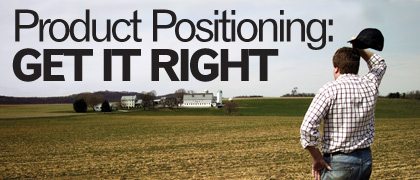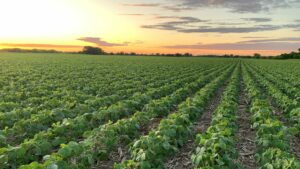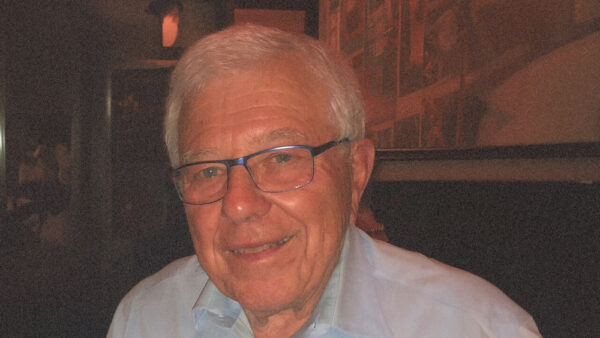It’s the million-dollar question—with double, triple and quadruple trait stacks becoming the norm industry wide, how do seed companies get the right seed, in the right place, at the right time?
“Seed positioning is one of the top five factors to producing a top crop,” says Rod Osthus of R.C. Thomas Company. However, it can be tricky in today’s rapidly-evolving marketplace. It wasn’t many years ago that newly-released varieties remained on the market 15 years or longer. Today, new technology-integrated varieties are on the market an average of only three years or less, according to Osthus. In fact, Osthus says they are being released so fast that there is no longer time for farmers to do what they have always done, try or test varieties before planting them on their farms.
“In general, seed companies have dropped the ball, not only when it comes to helping farmers make decisions on which varieties and technologies to use on their farms, but more importantly, where to plant them,” he says. “They are still putting the responsibility for those decisions on customers, even though in today’s marketplace, there is no way customers have the information they need to make those key decisions.”
Being Seed Leaders
Osthus says the problem is not just the rate of product releases and brief availability. “The problem is that seed companies have continued to let growers believe they can still make their own product selections. They haven’t put themselves into a leadership position so that customers realize their lack of ability and they start making those decisions for them,” says Osthus. “Sales reps have all of the information on products and farmers have none. Why, then, is anyone except the salesperson deciding what each farmer should be buying and in which fields those varieties should be planted?”
“Sales reps have all of the information on products and farmers have none. Why, then, is anyone except the salesperson deciding what each farmer should be buying and in which fields those varieties should be planted?”
–Rod Osthus
Seed companies have taken on the role of the car salesman when it comes to working with farmers, says Osthus. “They must meet with a farmer, interview him about his needs, shoot him a price and then let him make the decision,” he says. And according to Osthus, the “interview” step is critical for getting the right seed in the right place.
Know Your Customer’s Needs
Every farm is unique, every field is different and every farmer has his own style of management. “The days of selling the same variety to 20 farmers and allowing them to treat the variety like they want to treat it are over,” says Osthus.
Sitting down with a farmer and developing a cropping plan not only aids in variety selection, says Osthus, but it ensures proper product placement. “Seventy-five percent of all varieties never reach their full genetic potential on farms because they are planted in the wrong fields. How many seed sellers today follow the first rule to success prior to selling a farmer seed—looking at the fields first? It’s all about having a field-by-field cropping plan for each customer,” Osthus explains. “Every farmer needs one, but few have one because many seed company sales reps just ask the grower what he wants to do, then writes the order.”
“The doctor recommends the treatment and then places it on a chart for the patient to follow. The patient does not deviate from the plan without permission of the doctor. The cropping plan works exactly the same way.” —Rod Osthus
Osthus compares a field-by-field cropping plan to a doctor’s chart. “The doctor recommends the treatment and then places it on a chart for the patient to follow. The patient does not deviate from the plan without permission of the doctor. The cropping plan works exactly the same way,” explains Osthus.
Josh St. Peters, DuPont Pioneer corn marketing manager, agrees, and encourages growers and seed sales professionals to work together in choosing the right product for the right acre. “Ask yourself, ‘What are the characteristics of the field and what traits are needed to get the greatest return for each acre?’ Evaluate the agronomic traits needed for each field and select appropriate hybrids,” he says. “Know the insect pressures of each field and chose hybrids with the right insect protection traits. Select hybrids that match the tillage operation, whether it’s conventional, minimum till or no-till. Know each grower’s field and choose the product that best fits the complex needs of each.”
Tom Burrus of Burrus Hybrids says his company, which represents multiple trait suppliers, is well aware that proper seed positioning comes down to figuring out a farmer’s, or more specifically each specific field’s, needs. He says his company first matches the strongest genetics to the field or farm, then selects the insect and weed control measures.
“We are recommending different management practices for different growers based on their crop rotation, their geography and their affinity for risk,” says Burrus. “Most growers will use the CRW trait alone, some will rotate the traits, others will rotate the crop, and some will add granular insecticide to the trait in the most severe pressure areas.” Burrus has also gone to winter production the last two years to ensure supply of the latest technologies and genetics so growers have maximum yield potential for every acre.
And Burrus says technology is helping with the seed positioning process. “We now have a computer program called MyFarms that matches the ideal products to the soil type,” he says. “It recommends the correct refuge choices and correct amount of units or acres to be in compliance. Our approach has always been to protect the environment and the technology through stewardship.”
Know Your Products
Beyond knowing what your customer needs, seed companies also need to know what products are out there. And that can be tricky with the rapidly-evolving trait stack mixes.
In terms of staff training, Burrus says his company “has monthly meetings where we discuss ideas for helping growers make good management decisions. In between, we have webinars to support our staff and help them solve farm issues.”
Osthus says companies need to keep it simple when it comes to training staff on what products are available. “Companies need to stop training their sales people to be agronomists and start training them to be seed sellers,” says Osthus. “Companies are trying to train their sales reps on too many things. It is impossible for reps to become experts in genetics, technologies, agronomy, entomology, crop protection, fertility and so on.”
Reacting to Weather
Many producers use the past season as a guide for planning for the next one, but that isn’t the best policy for growers who want to get the most from each acre. Instead, it’s best to help growers plan for next year by telling them to look at the long-term weather trends.
“Weather changes from year to year and we can’t predict the next growing season. Rather than using this past year’s drought as a guide, growers should look at several seasons and rely on that information to make decisions,” says St. Peters. “Growers should look at the more long-term trends in their region and in their specific fields. No year is the same as the last, so plan for a typical season.”
However, Burrus says in some c
ases it is hard to break old habits. “Growers have spent a lifetime of evaluating products as they harvest to influence their decision making for the next year,” he says. “This will include 2012 if 2013 is expected to be another hot, dry year. If 2013 is a high-yield year, then the 2012 evaluation should be reduced in value or influence. Most growers will be considering crop insurance choices as they develop their plans for 2013.”
Osthus says the onus for correct seed placement after a bad weather year comes back to the seed seller: “It is important to remember that regardless of weather conditions, varieties must first be placed in their proper fields and treated properly for those field conditions.”
Julie McNabb














